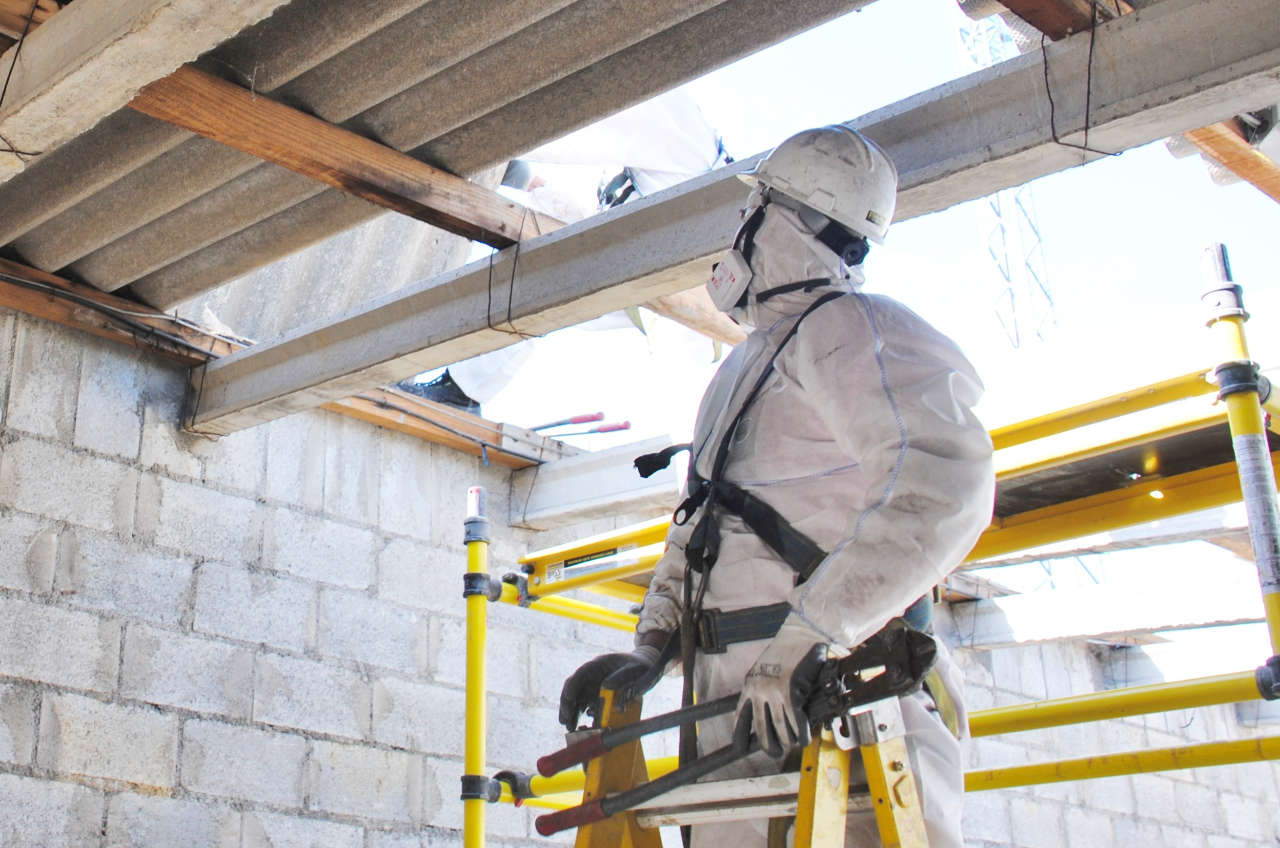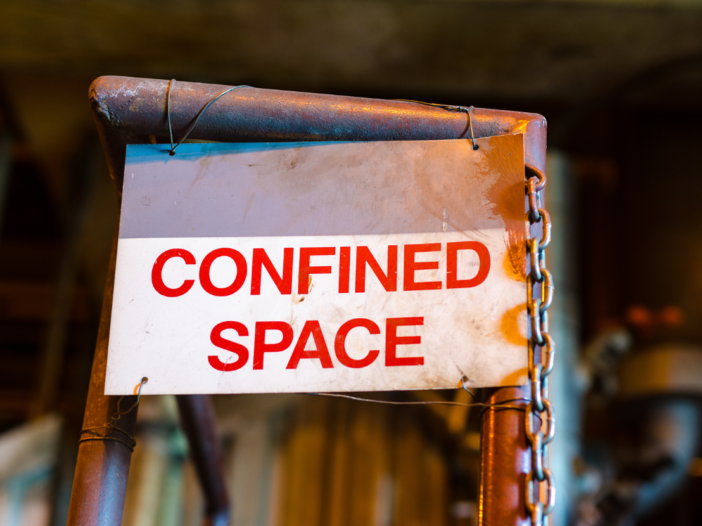
Asbestos exposure can be fatal, making it essential for duty holders to understand how to identify asbestos and manage associated risks.
This guide explains the responsibilities of duty holders, including identifying asbestos, conducting risk assessments, and implementing effective asbestos management plans.
Why is identifying asbestos important?
Despite being banned as a construction material in 1999, asbestos is the leading cause of UK workplace deaths, with 5,000 workers killed every year due to asbestos exposure and 20 tradespeople dying every week due to past asbestos exposure.
Asbestos-containing materials (ACMs) can still be found in buildings constructed or refurbished before the year 2000. Identifying asbestos is crucial to prevent harmful exposure.
How to identify asbestos in buildings
Common places for asbestos to be present include:
- Ceiling tiles and voids, partition walls and fire door panels.
- Insulation, such as lagging for boilers and pipes.
- Asbestos cement, used in gutters, roofing and water tanks.
- Textiles such as fire blankets and vinyl floor tiles.
- Sprayed coatings, such as on ceilings, beams, walls and columns.
If asbestos is in good condition, is well managed and remains undisturbed, it poses no risk.
However, if the material is disturbed or damaged, this can lead to invisible fibres being released into the air and subsequently inhaled, which can prove extremely dangerous to individuals and a wider population. People who inhale the fibres can suffer from serious diseases including asbestos-related lung cancer and mesothelioma.
The harmful fibres in asbestos cannot be smelt or tasted and are not visible to the naked eye. Related diseases and harm can take decades to develop. Anyone who has been exposed to asbestos may not know they have been affected until years later when the harm from the material then takes effect.
How can you identify asbestos?
Risk assessments must identify the types, quantity and condition of the asbestos present and the expected level of exposure.
Information on the building and whether it contains asbestos can be gathered by examining records of previous asbestos work and contacting previous owners or tenants, facilities management companies, previous suppliers and the building designer or architect.
If no records are available, or there are doubts about the accuracy or relevance of existing documents, employers may need to arrange a new management or refurbishment/demolition asbestos survey.
It may be sufficient for the assessment to be carried out by the duty-holder or another competent employee in small and simple premises. If there is any doubt or if the premises is larger or more complicated, it is essential to engage an external qualified asbestos surveyor.
The Health and Safety Executive says an asbestos survey should be “comprehensive and systematic”.
There are two types of survey:
- Management survey, for normal day-to-day occupation and maintenance of a building.
- Refurbishment and demolition survey, which is used if premises are set to be upgraded or refurbished or if demolition work is planned.
Material samples are required only for refurbishment and demolition surveys. Samples should only be taken by trained asbestos experts.
The entire building, both inside and out, should be checked. Products that could contain asbestos should also be checked, and some older plant and equipment may also have ACMs within them that could be exposed if they are removed, such as asbestos gaskets and seals.
If you are unsure whether a material contains asbestos, you should assume it does until proven otherwise.
From the inspection and survey results, an asbestos register should be created in written or electronic form. It should record details including:
- The condition and location of the ACM.
- The type of asbestos:
Chrysotile: known as white asbestos.
Amosite: known as brown asbestos.
Crocidolite: known as blue asbestos. - Material and priority score for each ACM.
The register should also include an accurate drawing of the premises with the location of the ACMs indicated.
The Health and Safety Executive provides an asbestos register template and a material and priority scores checklist.
For more information, read our guide How to test for asbestos.
Who is responsible for managing the risk of asbestos?
The Control of Asbestos Regulations 2012 places legal responsibilities on employers and duty holders of non-domestic buildings to manage asbestos risks. This includes industrial, commercial, and public buildings, as well as shared parts of some domestic premises. Duty holders must:
- Identify asbestos through risk assessments and surveys.
- Implement an asbestos management plan to control risks.
- Keep accurate records, such as an asbestos register.
- Provide asbestos awareness training to employees.
Failure to manage asbestos can lead to severe penalties, including fines and imprisonment.
For more information, please read our article Who does the Control of Asbestos Regulations apply to?
Asbestos management plan: a key responsibility
An asbestos management plan must be created and include:
- Your asbestos register.
- Who is responsible for managing asbestos.
- Instruction that no work can begin on the building until the relevant parts of the register are checked and all work must be completed by competent asbestos-trained contractors.
- Plans for any work identified by the assessment such as repairing, protecting or removing ACMs.
- The schedule for monitoring the condition of ACMs.
- How relevant people will be informed about asbestos management.
The management plan can be written or recorded electronically. As a minimum, the plan must be reviewed every 12 months. It should be updated when work is carried out that affects ACMs. An example asbestos management plan is available from the HSE.
Once the plan is in place, you must inform all relevant people. You should tell your employees and all workers who will carry out maintenance on the building including builders, plasterers, electricians and plumbers. The asbestos management plan should also be made available to the emergency services.
Signs and labels should be placed on anything that contains or might contain asbestos where this is appropriate, but this should not be the main approach to asbestos management.
Praxis42 IATP Asbestos Awareness Training
Identifying asbestos and managing risks are critical to ensuring workplace safety and compliance with legal requirements. Regular risk assessments, up-to-date asbestos registers, and comprehensive asbestos management plans are essential components of an effective strategy.
Employers also have a legal duty to provide employees with adequate training to protect themselves and others from accidental exposure to ACMs.

Developed by specialist health and safety consultants, our Asbestos Awareness training provides employees with an understanding of what asbestos is, where it is likely to be found, how they might be exposed to it, how to avoid exposure and the steps to take if they encounter ACMs.

Adam Clarke
Managing Director (Consulting)




